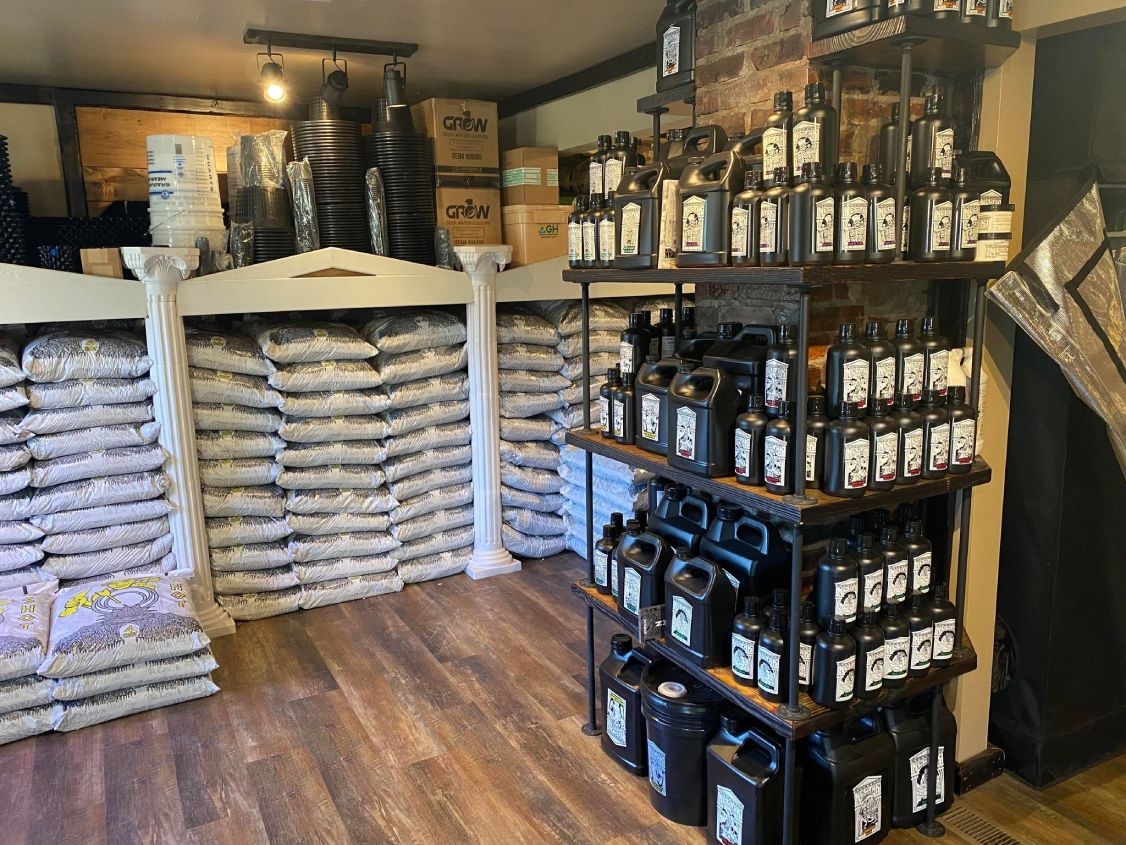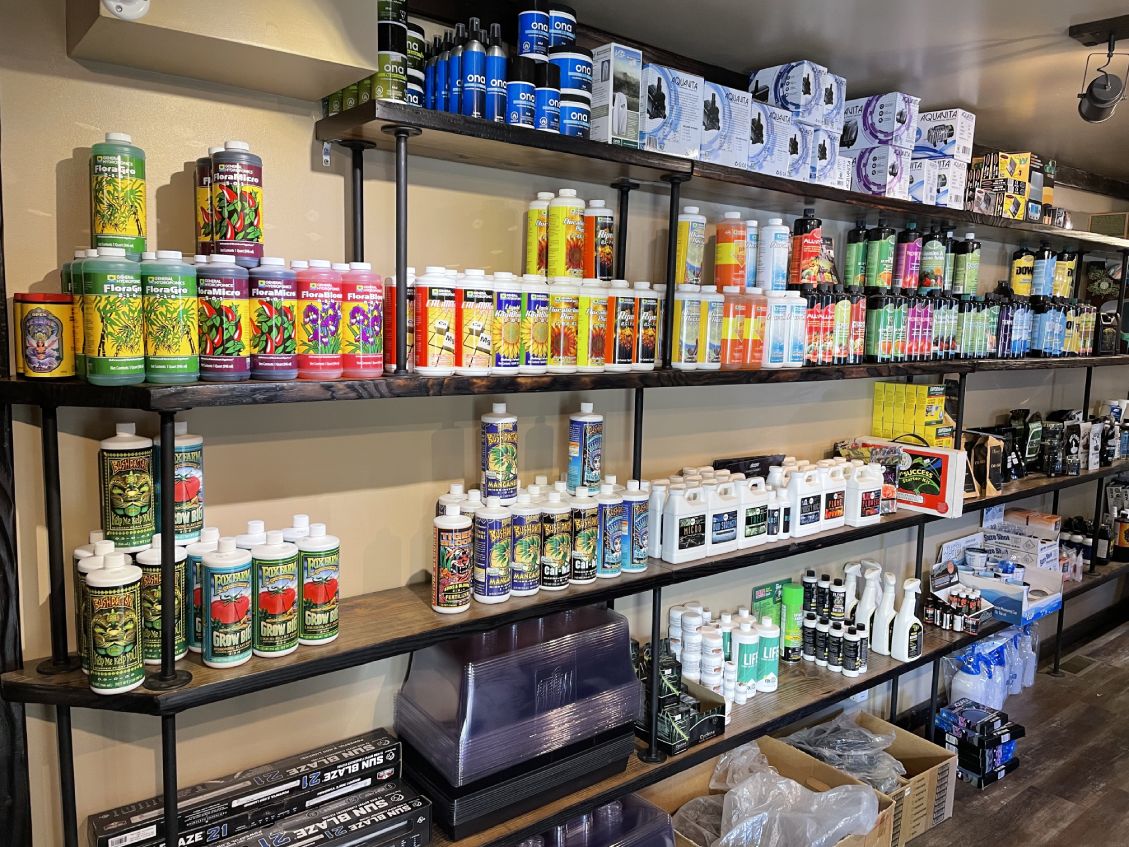Taking Advantage Of the Power of Hydroponics: a Deep Dive Into Makes Use Of and Various Types
In the realm of modern agriculture, hydroponics has become an approach that challenges standard farming methods by supplying a space-saving and water-efficient alternative. The use of hydroponic systems opens up a globe of opportunities for cultivating plants in varied environments, ultimately influencing food production and sustainability. As we navigate with the elaborate landscape of hydroponics, discovering its different kinds and applications, a much deeper understanding of its possible to transform farming methods and address global food protection problems begins to unfold.
Advantages of Hydroponic Farming
Hydroponic farming offers many benefits over traditional soil-based farming. One of the key advantages is water performance; hydroponic systems utilize up to 90% much less water compared to standard farming approaches.
Additionally, hydroponic farming enables better control over nutrient degrees, leading to faster plant growth and higher yields. By providing necessary nutrients straight to the plant roots, hydroponic systems promote healthier and more robust plant advancement. Furthermore, the controlled atmosphere of hydroponic systems minimizes the danger of illness and parasites, minimizing the need for hazardous chemicals and herbicides.

Common Types of Hydroponic Systems
Offered the many advantages of hydroponic farming, it is important to explore the different common kinds of hydroponic systems made use of in contemporary agriculture. One widespread kind is the Deep Water Society (DWC) system, where plant origins are immersed in a nutrient solution. An additional usual system is Nutrient Film Technique (NFT), which entails a thin film of nutrient-rich water moving over the origins - The Indoor Earthworm. The Ebb and Circulation system, also recognized as Flood and Drainpipe, periodically floods the plant origins with nutrient service prior to draining it. Aeroponics sticks out for its approach of putting on hold plant origins airborne and misting them with a nutrient service. Leak systems provide a managed amount of nutrient option directly to the plant's base. Wick systems, the simplest type of hydroponics, use a wick to passively provide vitamins and mineral option to the plant origins. Each of these systems uses one-of-a-kind advantages and provides to various plant kinds and development phases in hydroponic agriculture.
Nutrient Movie Technique (NFT) System

One of the crucial advantages of the NFT system is its water performance. The Indoor Earthworm. Given that the nutrient remedy is recirculated in a shut system, this technique uses dramatically less water compared to standard dirt farming. Furthermore, the NFT system is space-efficient, making it suitable for interior farming or in areas with minimal space for traditional farming
Nonetheless, the NFT system needs careful monitoring and maintenance to make sure the constant flow of water and nutrients. Any kind of disruption in the circulation can promptly influence plant health. On the whole, the NFT system supplies a reliable and lasting way to expand plants hydroponically, especially for crops that flourish in well-oxygenated origin environments.
Deep Water Society (DWC) System
Moving from the Nutrient Film Strategy (NFT) system, the Deep Water Society (DWC) system is a hydroponic approach that involves putting on hold plant roots directly in a nutrient remedy. Unlike NFT, where roots are continuously subjected to a slim movie of nutrient service, DWC plants have their origins submerged in a reservoir full of aerated vitamins and mineral water. The origins dangle in the nutrient option, enabling for direct uptake of water and vital nutrients.
One of the essential benefits of the DWC system is its you could try here simplicity and reduced maintenance needs. The constant access to oxygen and nutrients promotes quick growth and higher returns. DWC systems require ample oygenation to stop origin rot and guarantee optimal nutrient absorption. Regular monitoring of pH degrees and nutrient focus is important to avoid imbalances that could harm plant health and wellness.
Aeroponic System
A cutting-edge approach in hydroponics cultivation, the Aeroponic System uses a misting or misting system to supply nutrients directly to plant roots put on hold airborne. This system is understood for its ability to advertise fast growth and reliable nutrient uptake because of the straight delivery of nutrients to the roots, allowing the plant to focus its power on development instead than searching for nutrients. In an aeroponic setup, plants are generally housed in a closed environment where the roots are intermittently misted with a nutrient option. This misting cycle guarantees that the roots obtain enough oxygen, advertising healthy origin growth and general plant growth.
One of the key benefits of aeroponics is its water effectiveness, as the system makes use of substantially less water contrasted to typical soil-based growing methods. Furthermore, the specific delivery of nutrients straight to the roots can result in higher yields and faster growth rates. While aeroponics can be much more complicated to establish up and maintain contrasted to various other hydroponic systems, its possibility for raised plant development and effectiveness makes it a popular option for hydroponic fanatics and commercial farmers seeking optimal outcomes.
Conclusion
To conclude, hydroponic farming provides numerous benefits and different kinds of systems to pick from. The Nutrient Movie Technique (NFT) system, Deep Water Society (DWC) system, and Aeroponic system are amongst one of the most common techniques used in hydroponics. Each system has its very own benefits and restrictions, making it essential for farmers to meticulously consider their requirements and preferences prior to selecting one of the most appropriate system for their crops.
Unlike other hydroponic systems where plants are immersed in a nutrient remedy, in the NFT system, the origins are revealed to the water only in a superficial movie.Relocating from the Nutrient Film Strategy (NFT) system, the Deep Water Society (DWC) system is a hydroponic method that entails suspending plant roots straight in a nutrient option.An ingenious technique in hydroponics farming, the Aeroponic System utilizes a misting pop over here or fogging system to provide nutrients straight to plant origins put on hold in the air. The Nutrient Film Technique (NFT) system, Deep Water Culture (DWC) system, and Aeroponic system are amongst the most usual approaches go to this site used in hydroponics. Each system has its very own advantages and limitations, making it necessary for farmers to meticulously consider their needs and choices before choosing the most appropriate system for their plants.